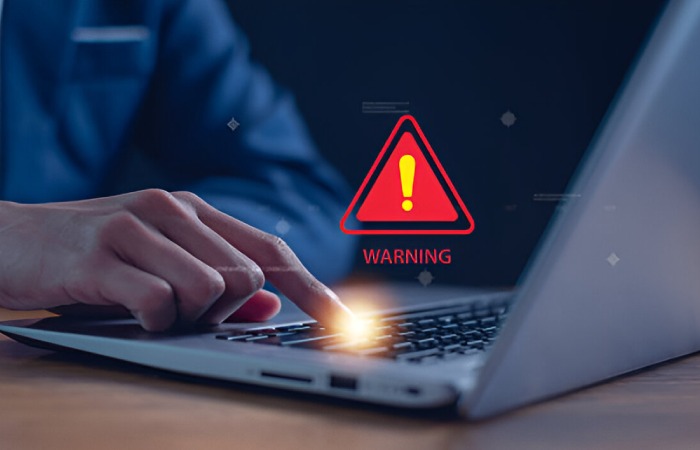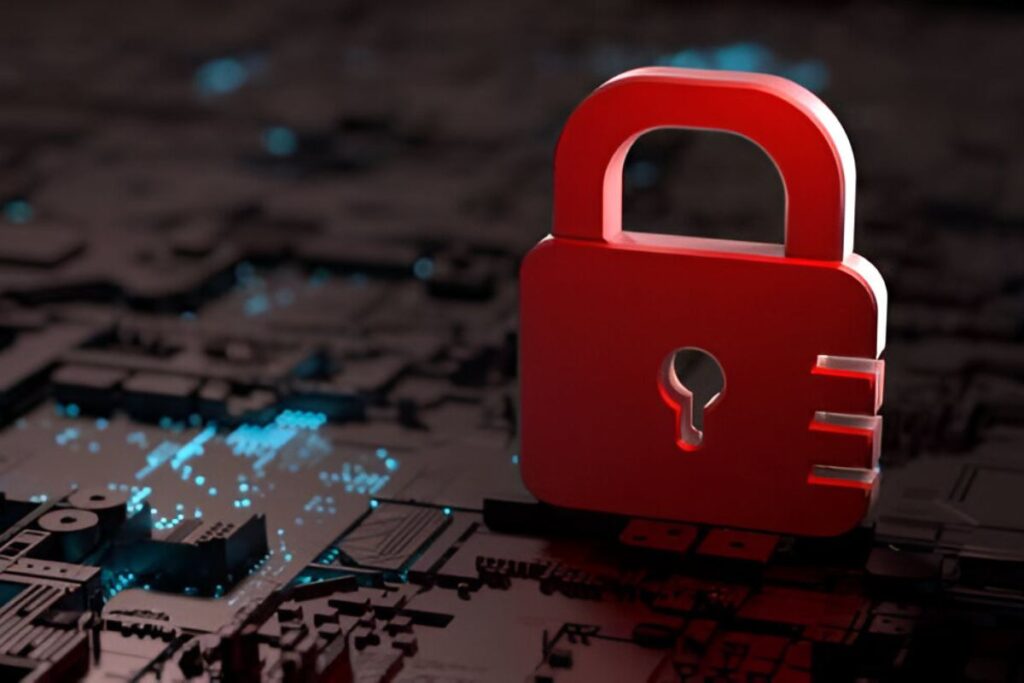Have you ever woken up to find your computer files locked and a demand for payment flashing on your screen? Or maybe you’ve heard horror stories about businesses losing millions to cybercriminals overnight? If the thought of a ransomware attack keeps you up at night, you’re not alone.
I’ve been working in cybersecurity for over a decade. I can tell you that ransomware attacks have become the nightmare scenario that keeps IT professionals and business owners on edge. But here’s the thing – most people think they understand ransomware when they don’t.
A ransomware attack isn’t just about paying money to get your files back. It’s about understanding how these attacks work, why they’re so effective, and most importantly, how to protect yourself before it’s too late.
What is a Ransomware Attack?
A ransomware attack is a malicious cyber attack where criminals encrypt your files, systems, or entire networks and demand payment (usually in cryptocurrency) to restore access. In today’s digital landscape, understanding ransomware attacks is critical for business owners, IT professionals, and everyday computer users who want to protect their valuable data.
Think of a ransomware attack like a digital kidnapping. Criminals break into your digital space, lock up everything valuable, and hold it hostage until you pay up. But unlike traditional abduction, they can target thousands of victims simultaneously and operate from anywhere in the world.
The scary part about a ransomware attack is how quickly it can spread. Modern ransomware can encrypt thousands of files in minutes and spread across entire networks. Affecting not just individual computers but whole organisations.
What makes a ransomware attack particularly devastating is that even if you pay the ransom, there’s no guarantee you’ll get your data back. Some studies show that only 65% of victims who pay recover their files, and many find their data corrupted or incomplete.
Why Ransomware Attacks Matter in 2025

- Let’s be brutally honest. ransomware attacks are absolutely crushing businesses and individuals worldwide. These attacks transform how we think about cybersecurity in healthcare, education, manufacturing, and government services.
- Here’s what’s happening with ransomware attacks right now:
- The financial impact is staggering. The average ransomware attack cost has jumped to over $4.6 million per incident, including downtime. Recovery costs, and lost business, Small businesses often can’t survive a major attack.
- Attackers are getting smarter. Today’s ransomware attack isn’t just about encryption. Criminals are stealing sensitive data first, then threatening to publish it publicly if you don’t pay – a double extortion strategy that’s incredibly effective.
- Critical infrastructure is under siege. Ransomware attacks shut down oil pipelines, hospitals, and city governments. These aren’t just IT problems anymore – they’re public safety issues.
- Remote work has expanded the attack surface. With more people working from home, there are more entry points for a ransomware attack to exploit. Home networks are often less secure than corporate environments.
How Ransomware Attacks Actually Work
Understanding how a ransomware attack unfolds can help you spot the warning signs and take action before it’s too late. Here’s the typical playbook:
Phase 1: Initial Access
Criminals gain entry through:
- Phishing emails with malicious attachments or links
- Vulnerable remote desktop connections with weak passwords
- Software vulnerabilities that haven’t been patched
- Infected websites or malicious ads
Phase 2: Reconnaissance
Once inside, the ransomware attack enters a surveillance phase where attackers:
- Map out your network and identify valuable targets
- Steal credentials and escalate privileges
- Disable security tools and backup systems
- Sometimes lurk for weeks or months before striking
Phase 3: Execution
This is when the ransomware attack becomes visible:
- Files are encrypted using military-grade encryption
- Ransom notes appear across infected systems
- Network shares and backups are targeted
- Exfiltrated data is used as additional leverage
Phase 4: Extortion
The final phase of a ransomware attack involves:
- Ransom demands (usually $10,000 to millions of dollars)
- Countdown timers create urgency
- Threats to publish stolen data
- “Customer service” to help victims pay
Types of Ransomware Attacks You Should Know About
Not all ransomware attacks are created equal. Here are the main types you need to understand:
- Crypto Ransomware: The most common type that encrypts your files and demands payment for the decryption key.
- Locker Ransomware: Locks you out of your device entirely, but doesn’t necessarily encrypt files.
- Scareware: Fake security software that claims your system is infected and demands payment for “cleaning.”
- Doxware/Leakware: Threatens to publish your sensitive data publicly unless you pay.
- Ransomware-as-a-Service (RaaS): Criminal groups rent out ransomware tools to other criminals, making ransomware attacks more accessible to less technical criminals.
- Double and Triple Extortion: Modern attacks that combine encryption with data theft and threats to attack your customers or partners.
Ransomware Attack vs. Other Cyber Threats
Confused between a ransomware attack and other cyber threats? Here’s a comparison to clarify:
| Feature | Ransomware Attack | Data Breach | Malware Infection |
| Primary Goal | Financial extortion | Data theft | Various (spying, control) |
| Visibility | Immediately obvious | Often hidden for months | Maybe hidden |
| Recovery Time | Days to months | Varies | Hours to days |
| Financial Impact | $10K – $10M+ in ransoms | Regulatory fines, lawsuits | System cleanup costs |
| Data Risk | Encryption + theft | Theft/exposure | Potential theft |
| Business Impact | Complete shutdown | Reputation damage | Performance issues |
The key difference is that ransomware attacks are designed to be disruptive and visible, While other threats often try to remain hidden.
How to Prevent Ransomware Attacks: A Complete Defence Strategy
Here’s your step-by-step guide to protecting yourself from a ransomware attack:
1. Implement the 3-2-1 Backup Rule
This is your lifeline during a ransomware attack:
- 3 copies of important data
- 2 different storage media types
- 1 copy stored offline or in immutable cloud storage
2. Keep Everything Updated
Ransomware attacks often exploit known vulnerabilities:
- Enable automatic updates for operating systems
- Update all software applications regularly
- Patch network equipment and security tools
- Replace unsupported software immediately
3. Train Your Team
Human error causes 95% of successful ransomware attacks:
- Regular phishing simulation training
- Clear policies about email attachments and links
- Incident reporting procedures
- Password management best practices
4. Deploy Layered Security
No single tool stops every ransomware attack:
- Next-generation antivirus with behavioural analysis
- Email security to block phishing attempts
- Network segmentation to limit attack spread
- Endpoint detection and response (EDR) tools
5. Control Access and Privileges
Limit what a ransomware attack can access:
- Implement least privilege access principles
- Use multi-factor authentication everywhere
- Regularly audit user permissions
- Monitor privileged account activity
6. Create an Incident Response Plan
When a ransomware attack happens, every minute counts:
- Clear roles and responsibilities
- Communication procedures
- Technical response steps
- Legal and regulatory requirements
Essential Tools for Ransomware Attack Protection

Here are the tools I recommend for defending against ransomware attacks:
Backup Solutions:
- Acronis Cyber Backup: Advanced backup with anti-ransomware features
- Veeam Backup & Replication: Enterprise-grade backup and recovery
- Carbonite Safe: Cloud backup for small businesses
Security Platforms:
- CrowdStrike Falcon: Leading EDR platform for detecting ransomware
- SentinelOne: AI-powered endpoint protection
- Microsoft Defender: Built-in protection for Windows environments
Email Security:
- Proofpoint: Advanced threat protection for email
- Mimecast: Comprehensive email security platform
- Microsoft Defender for Office 365: Integrated email protection
Network Security:
- Cisco Umbrella: DNS-layer security to block malicious domains
- Palo Alto Networks: Next-generation firewall protection
- Fortinet FortiGate: Comprehensive network security
Training and Awareness:
- KnowBe4: Security awareness training platform
- Proofpoint Security Awareness: Integrated training solution
- SANS Securing The Human: Professional security training
Case Study: How ABC Manufacturing Survived a Major Ransomware Attack
Let me share a real example of how proper preparation helped a company survive a ransomware attack.
The Company: ABC Manufacturing, a mid-size automotive parts manufacturer with 500 employees and operations across three states.
The Attack: On a Friday morning, employees reported that they couldn’t access files on shared drives. Within 30 minutes, it was clear they were experiencing a ransomware attack. The Ryuk ransomware had encrypted over 80% of their network, including:
- Production planning systems
- Customer databases
- Financial records
- Email servers
The Response:
Thanks to their incident response plan, ABC Manufacturing acted quickly:
- Immediate Isolation: They disconnected affected systems from the network within 15 minutes
- Backup Recovery: Their offline backup system was unaffected by the ransomware attack
- Communication: They notified customers, suppliers, and authorities within 2 hours
- Recovery Process: Started restoring systems from clean backups immediately
The Outcome:
- Zero ransom paid – They refused to negotiate with the criminals
- 72-hour recovery time – Most critical systems were restored within 3 days
- Total cost: $85,000 (compared to the $2.3 million ransom demand)
- Business continuity: Manufacturing resumed with minimal customer impact
Key Success Factors:
- Regular backup testing – They verified backups monthly
- Network segmentation – The attack couldn’t spread to all systems
- Incident response plan – Everyone knew their role during the crisis
- Employee training – Quick reporting helped contain the ransomware attack
This case shows that while you can’t prevent every ransomware attack, you can minimise the damage through proper preparation.
What to Do During a Ransomware Attack

If you’re currently facing a ransomware attack, here’s your immediate action plan:
1. First 30 Minutes
- Don’t panic – Quick, smart decisions are crucial
- Disconnect affected systems from the network immediately
- Take photos of ransom messages (don’t screenshot – they might be encrypted)
- Preserve evidence – Don’t try to “clean” anything yet
- Activate your incident response team
2. First Hour
- Assess the scope – What systems are affected?
- Contact authorities – FBI Internet Crime Complaint Centre (IC3)
- Notify your insurance company if you have cyber insurance
- Contact cybersecurity experts – Don’t go it alone
- Begin communications planning – Customers, partners, employees
3. First Day
- Start recovery from backups if they’re unaffected
- Implement containment measures to prevent the spread
- Document everything for insurance and legal purposes
- Consider legal obligations – Notification requirements vary by industry
- Plan for extended operations – This may take weeks to resolve fully
Important: Most cybersecurity experts strongly recommend against paying the ransom. It funds criminal operations and doesn’t guarantee data recovery.
The Psychology Behind Ransomware Attacks
Understanding the psychology of a ransomware attack can help you make better decisions under pressure:
Time pressure tactics: Criminals create artificial urgency with countdown timers, but often extend deadlines if they think you’ll pay.
Authority manipulation: Ransom messages often impersonate law enforcement or use official-looking language to increase compliance.
Sunk cost fallacy: After investing time in negotiations, victims feel compelled to pay rather than start over with recovery.
Learned helplessness: The overwhelming nature of a ransomware attack can make victims feel they have no choice but to pay.
Social proof: Criminals often claim “most victims pay” to normalise the payment decision.
Recognising these psychological tactics can help you make rational decisions during a ransomware attack rather than emotional ones.
Legal and Compliance Considerations
A ransomware attack isn’t just a technical problem – it’s a legal and compliance issue:
- Notification Requirements: Many jurisdictions require breach notifications within specific timeframes, even for ransomware attacks.
- Regulatory Compliance: Industries like healthcare (HIPAA), finance (SOX), and retail (PCI DSS) have specific requirements for handling ransomware attacks.
- Insurance Claims: Cyber insurance policies often have specific requirements for how you respond to a ransomware attack to maintain coverage.
- Law Enforcement: While reporting a ransomware attack to authorities is voluntary, it helps track criminal operations and may provide recovery assistance.
- International Considerations: Additional legal complexities may arise if your ransomware attack involves international criminal groups.
The Future of Ransomware Attacks
Ransomware attacks continue to evolve. Here’s what I’m watching for in 2025 and beyond:
- AI-Powered Attacks: Criminals use artificial intelligence to create more convincing phishing emails and identify valuable targets for ransomware attacks.
- Supply Chain Targeting: Criminals target software vendors and service providers to achieve maximum impact instead of attacking individual companies.
- Mobile Ransomware: As mobile devices become more integral to business operations, we’ll see more ransomware attacks targeting smartphones and tablets.
- Cloud-Focused Attacks: With businesses moving to the cloud, ransomware attacks increasingly target cloud infrastructure and SaaS applications.
- Regulatory Response: Governments worldwide are implementing stricter penalties for paying ransoms and requirements for ransomware attack reporting.
Recovery and Business Continuity After a Ransomware Attack
Surviving the initial ransomware attack is just the beginning. Here’s how to rebuild stronger:
Immediate Recovery (Days 1-7):
- Restore critical systems from clean backups
- Implement additional security monitoring
- Communicate with stakeholders about recovery progress
- Document lessons learned while they’re fresh
Short-term Recovery (Weeks 2-4):
- Complete full system restoration
- Conduct a security assessment to identify vulnerabilities
- Update incident response plans based on experience
- Provide additional staff training on security awareness
Long-term Strengthening (Months 2-6):
- Implement enhanced security controls
- Upgrade backup and recovery systems
- Consider cyber insurance if not already covered
- Regular security audits and penetration testing
Building a Ransomware-Resistant Culture
The best defence against a ransomware attack isn’t just technology – it’s people:
- Leadership Commitment: Security must be a boardroom priority, not just an IT issue.
- Regular Training: Monthly security awareness training with real-world examples of ransomware attacks.
- Reporting Culture: Employees should feel safe reporting suspicious emails or potential security issues.
- Recognition Programs: Reward employees who identify and report potential ransomware attack vectors.
- Cross-departmental Collaboration: IT, legal, HR, and operations must work together on ransomware attack prevention.
Final Thoughts on Ransomware Attacks
Ransomware attacks are not just an IT problem but an existential threat to businesses and individuals alike. Understanding how these attacks work and implementing proper defences can significantly reduce your risk and minimise damage if an attack occurs.
The organisations that take ransomware attacks seriously today and invest in proper prevention, detection, and response capabilities will be the ones that survive and thrive tomorrow. Don’t wait until you’re staring at a ransom demand to start thinking about cybersecurity.
Remember, recovering from a ransomware attack is possible, but prevention is always better than a cure. The time and money you invest in security today will pay dividends when criminals knock at your digital door.
Frequently Asked Questions (FAQs)
Q1: What is a ransomware attack?
A: A ransomware attack is a cyber attack where criminals encrypt your files or systems and demand payment for the decryption key to restore access.
Q2: How does a ransomware attack benefit cybercriminals?
A: Ransomware attacks generate billions in illegal profits through ransom payments, data theft for resale, and follow-up attacks using stolen credentials.
Q3: What are common mistakes to avoid during a ransomware attack?
A: Don’t pay the ransom immediately, don’t try to decrypt files yourself, don’t ignore incident response procedures, and don’t fail to preserve evidence for law enforcement.
Q4: How much does a typical ransomware attack cost?
A: The average cost ranges from $10,000 for small businesses to over $10 million for major enterprises. Including ransom payments, recovery costs, and business disruption.
Q5: Should you pay the ransom in a ransomware attack?
A: Security experts and law enforcement generally advise against paying. As it funds criminal operations and doesn’t guarantee file recovery.
Ready to protect yourself from ransomware attacks?
Start with a comprehensive backup strategy and security awareness training today. Your future self will thank you for taking action before it’s too late.

